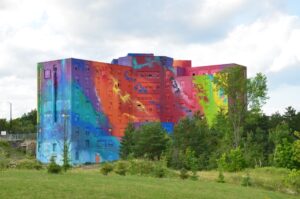The ship has been known locally by many names including, the Big Weasel, The Pirate Ship, and the Ghost Ship but its actual name was the Grande Hermine. It began its life over one hundred years ago as a steam ferry designed to transport passengers amongst the many islands in Quebec’s St. Lawrence River. After a history of being rebuilt and sold, it eventually made its way to Jordan Harbour where its owners hoped it could be successfully transformed into a floating restaurant, bar, and casino. But after the business venture failed to turn a profit, it was left to rust in the waters of Lake Ontario. Today the ship has become one of the most significant landmarks on the busy Queen Elizabeth Way highway. Its two-mast continued to stand tall and proud and while its rusting hull slowly deteriorates, it continues to stand as a memorial to the ship’s long history and failed business ventures.
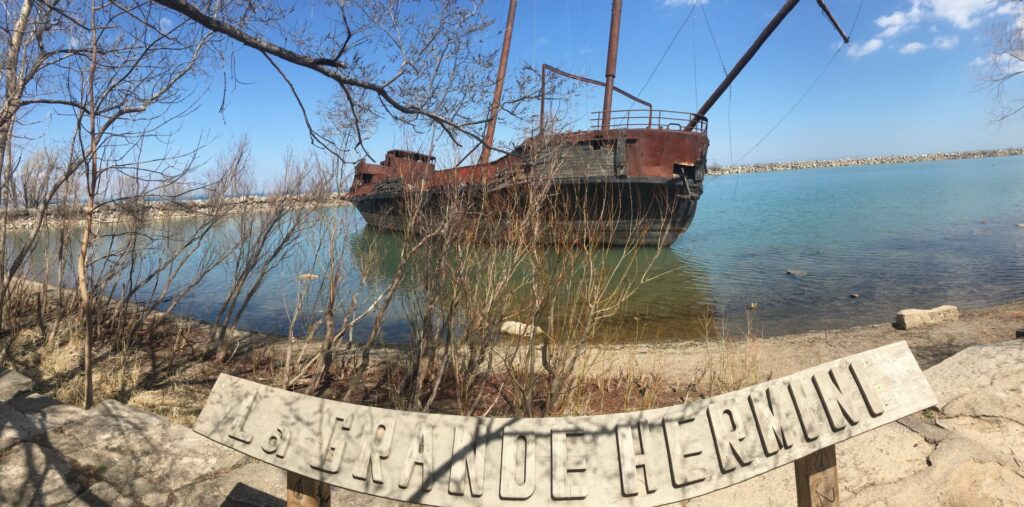
Le Progres
The ship was launched in September 1914 from the Davie Shipbuilding & Repairing yard in Lauzon, Quebec. It was built as a steam ferry originally for the shipyard’s owner George T. Davie & Sons Ltd and christened Le Progres. The 465 gross-ton ferry had a length of 38.4 meters, a width of 7.4 meters, and a draft of 3.35 meters which permitted it to carry 550 passengers at any one time. Shortly after its construction, Le Progres was immediately put to work transporting passengers along the St. Lawrence River in the city of Trois Rivière.
The ship continued to operate reliably as a ferry over the next several decades, however, as the population along the St. Lawrence River grew throughout the first half of the twentieth century it was repeatedly replaced with larger ferries. In 1930, it was renamed La Verendrye but continued to be used as a ferry until the second half of the twentieth century.
In 1956, La Verendrye was completely rebuilt and transformed into a “coaster” or a coastal-going cargo ship. The rebuild involved replacing the ship’s steam engine with a diesel-powered engine and the ship’s hull was opened up to produce a single cargo hold which could be loaded with the help of two newly installed cargo booms (cranes). While the ship’s rebuild technically decreased the ship’s tonnage to 356 tons it now allowed it to transport much more cargo beneath the ship’s main deck. After the rebuild was completed, the ship was given the new name, La Marjolaine.
La Marjolaine only operated for just under two years as a cargo vessel, before it was once again transformed back into a ferry (its aft mast and cargo boom removed). In the winter of 1958, the steel-hulled La Marjolaine replaced the wooden ferry, Mont Laurier on a trial run between Saint Joseph-de-la-Rive and Ile aux Coudres, just north of Quebec City on the St. Lawrence River. The winter trial proved successful as the steel-hulled ship was much more adapted to withstanding the ice of the St. Lawrence River than the previous wooden-hulled Mont Laurier. Seeing its success, La Marjolaine was then purchased by the Cartier Navigation Company Ltd. where it continued to operate the route year-round.
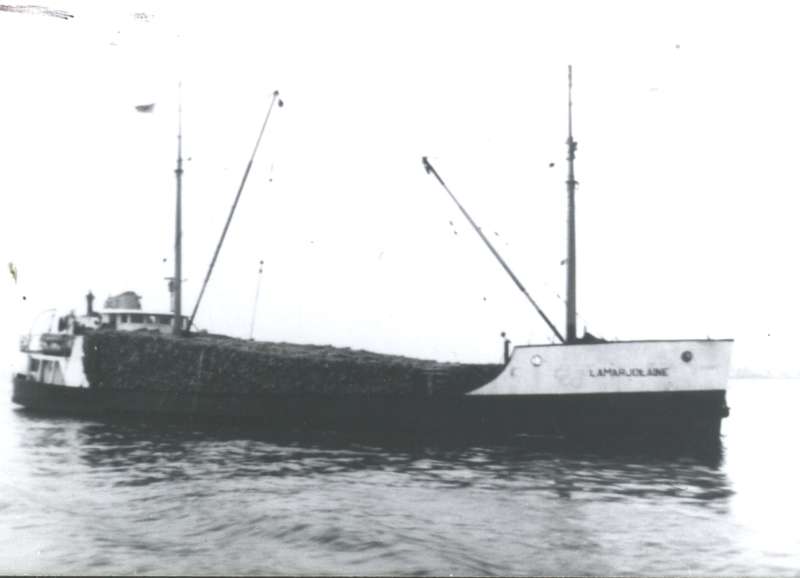
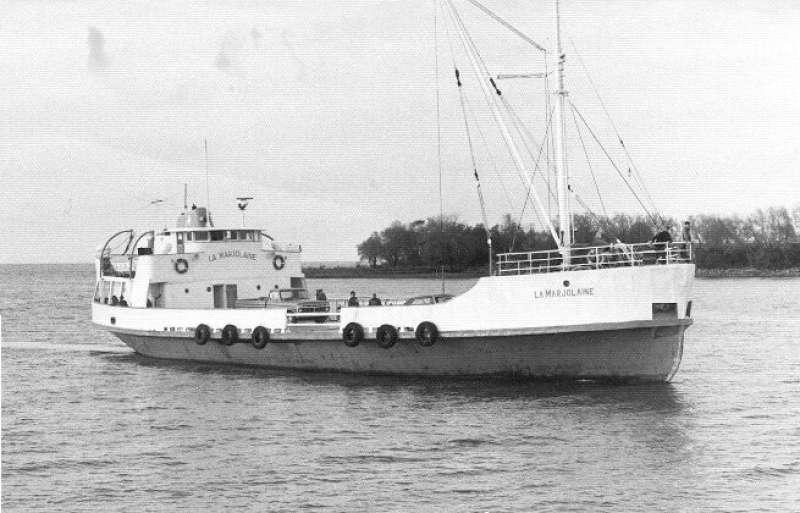
Photos: http://www.shipspotting.com/gallery/photo.php?lid=155368 & http://www.shipspotting.com/gallery/photo.php?lid=155367
By 1969 the ship was only operating during the winter months and as a replacement ship for the river route. In 1973, with the introduction of a new larger ferry to the route, La Marjolaine was retired and temporarily laid up.
Not to sound repetitive but the ship was then sold again in 1975 and moved to the town of Ile aux Grues where it replaced the wooden ferry, Lévisienne on the route between Montmagny and Ile-aux-Grues. Once again the ship was replaced by the larger ferry, Grues des Iles, before being sold again in the fall of 1980 by Shelso Enterprises Ltd. based out of Côte-Ste-Catherine.
The ship remained laid up over the winter in Louiseville during which time the engines were removed, and the ship underwent the next biggest change of its career, this time transforming into a floating restaurant. Most of this rebuild occurred in the Spring of 1982 when the cargo hold war covered, and a structure was built over its main deck where the restaurant was to be located. Moored to the wharf near the seaway locks in Côte-Ste-Catherine, the restaurant operated for the next year or two before the endeavor was deemed nonviable.
La Marjolaine was placed for sale late in the winter of 1985, where it was advertised for its rich history, newly renovated condition, and unique venue as a restaurant. But the ship remained laid-up until 1991 when it was purchased once again to be used as a restaurant and possibly even a casino.
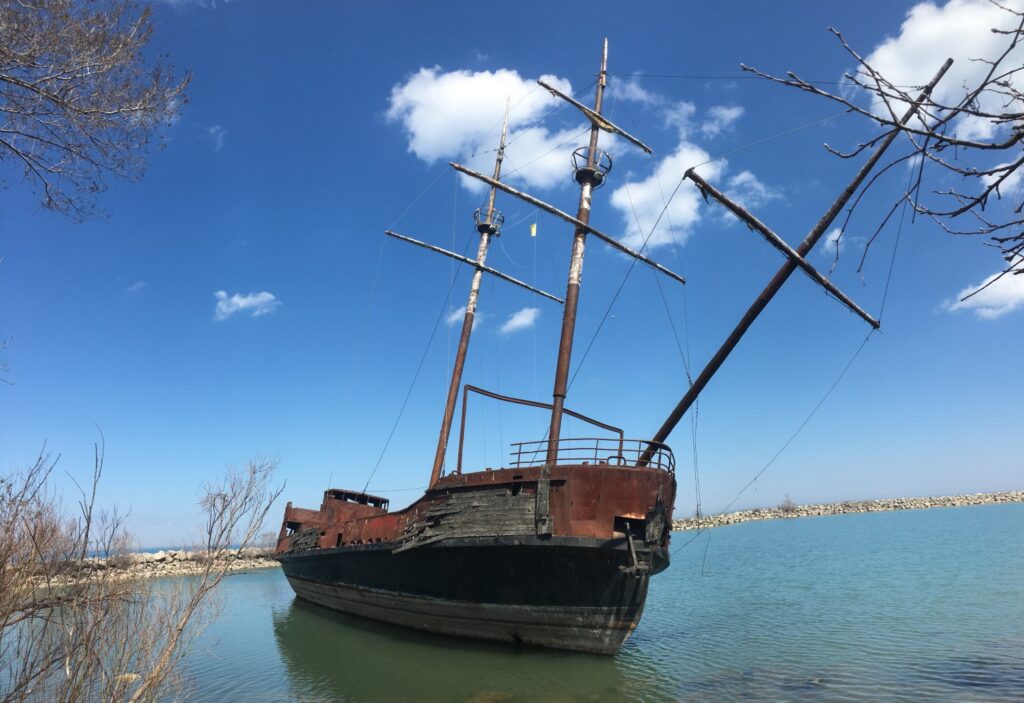
La Grande Hermine
The ship’s new owner wanted to do something different with the aging steel ship and so in 1991, they rebuilt most of the ship, installing two new masts and covering its exterior with wooden paneling, making it resemble the largest of the three, 16th-century tall ships that explorer and colonizer Jacques Cartier used to explore the St. Lawrence River. La Marjolaine was then renamed after Cartier’s ship becoming christened La Grande Hermine. History seemed to repeat itself however and after operating for two years the endeavor was shut down as it was not able to make a sustainable profit.
As with much of the ship’s history, after this, there seems to be some confusion. The ship was believed to have sunk in January 1995, shortly after the closing of the restaurant. It was then refloated before being laid up in 1997. During this time, it was purchased again by a businessman who hoped to revive the restaurant and casino, and who towed it to the marina located near Jordan Harbour where it can be found today. But before the business endeavor opened, the new owner passed away, bringing the story of the ship to an end.
An End
For some time, the ship laid run aground in the Marina, and while it is said to have been briefly transformed to resemble a pirate ship to raise money for a local school program, it remained inactive for the next six years. In 2003, a fire believed to have been started by local teenagers, set the main deck on fire, burning the wooden siding and decking, leaving behind just the charred remains of the steel hull.
While this was seen as the end of an era for the symbolic icon, the fire revealed the ship’s original self; a steel ferry built to transport passengers along the St. Lawrence River.
About the Area
While rusted and deteriorating, the ship’s condition today is incredible given its history. It continues to stand overlooking the nearby marina and Queen Elizabeth Way. And because of this it also remains one of the most accessible “shipwrecks” in Ontario. Parking near the Jordan/Beacon Harbour Ramada Hotel found on the QEW’s North Service Road, a short and relatively easy walk will bring you alongside the ship. For those looking to get a closer look, a convenient slipway at the nearby marina makes the ship a popular spot for canoeists, kayakers, and paddleboarders.
There seems to be a lot of contradicting information about the ship and for the writing of this article, information was taken from primary sources where possible, and trusted secondary sources to fill in information.
Sources and Further Exploring
Bascom, J.N. (1981). Lay-up Listings. The Scanner. Vol. 13, No. 6 (March 1981). Toronto. Retrieved from https://www.maritimehistoryofthegreatlakes.ca/GreatLakes/Documents/Scanner/13/06/default.asp?ID=s006.
Bascom, J.N. (1982). Marine News. The Scanner. Vol. 15, No. 3 (December 1982). Toronto. Retrieved from https://www.maritimehistoryofthegreatlakes.ca/GreatLakes/Documents/Scanner/15/03/default.asp?ID=s003.
Bascom, J.N. (1984). Marine News. The Scanner. Vol. 16, No. 7 (Summer 1984). Toronto. Retrieved from www.maritimehistoryofthegreatlakes.ca//documents/scanner/16/09/default.asp?ID=s004.
Bascom, J.N. (1985). Marine News. The Scanner. Vol. 17, No. 7 (April 1985). Toronto. Retrieved from www.maritimehistoryofthegreatlakes.ca/GreatLakes/Documents/Scanner/17/07/default.asp?ID=c3.
Brock University & Tourism Niagara (2012). Grande Hermine. BrockU.NiagaraGreenBelt.com. Retrieved from https://brocku.niagaragreenbelt.com/listings/70-monuments/900-grande-hermine-.html.
Dowsett, K. (2020). Grande Hermine: Abandoned But Not Forgotten. The Scuba News. Retrieved from https://www.thescubanews.com/2020/04/26/grande-hermine-abandoned-but-not-forgotten/.
Mackay, M. (2017). Poste #71 traversier et caboteur La Marjolaine. NavigationQuebec.blogspot.com. Retrieved from http://navigationquebec.blogspot.com/2017/07/poste-71-traversier-et-caboteur-la.html.
ShipBuildingHistory.com (2020). Davie Shipbuilding, Lauzon QC. Retrieved from http://shipbuildinghistory.com/canadayards/davie.htm.


